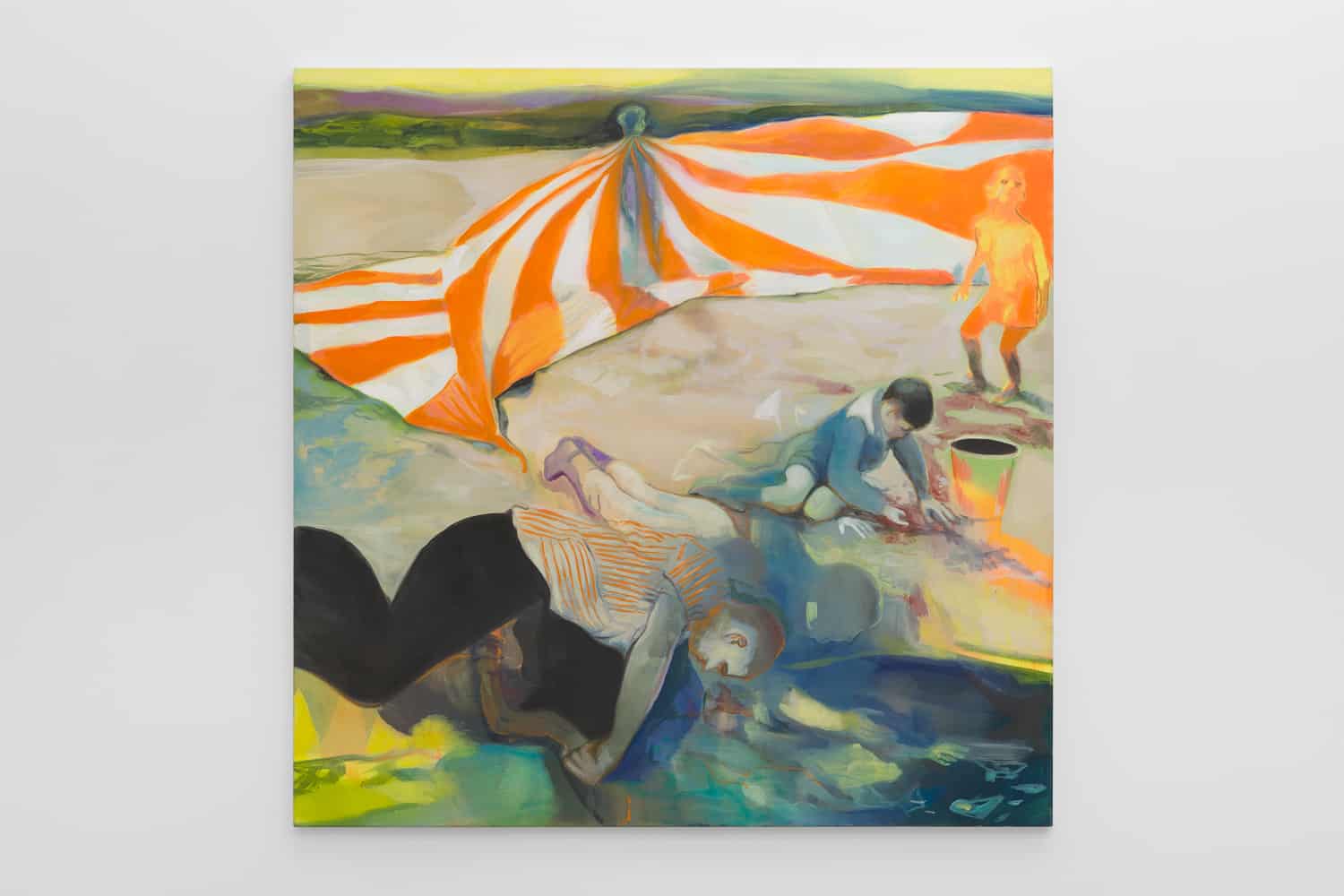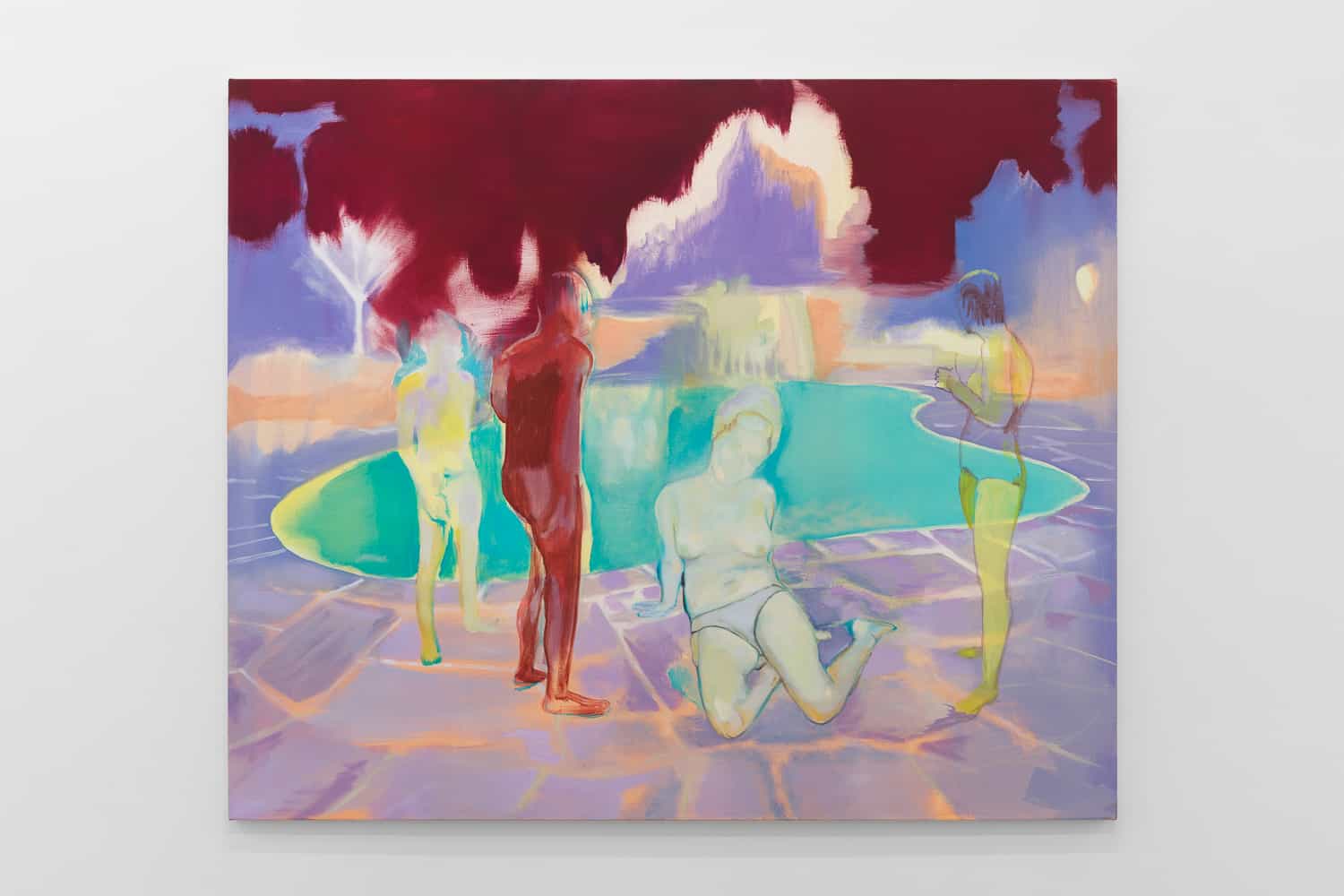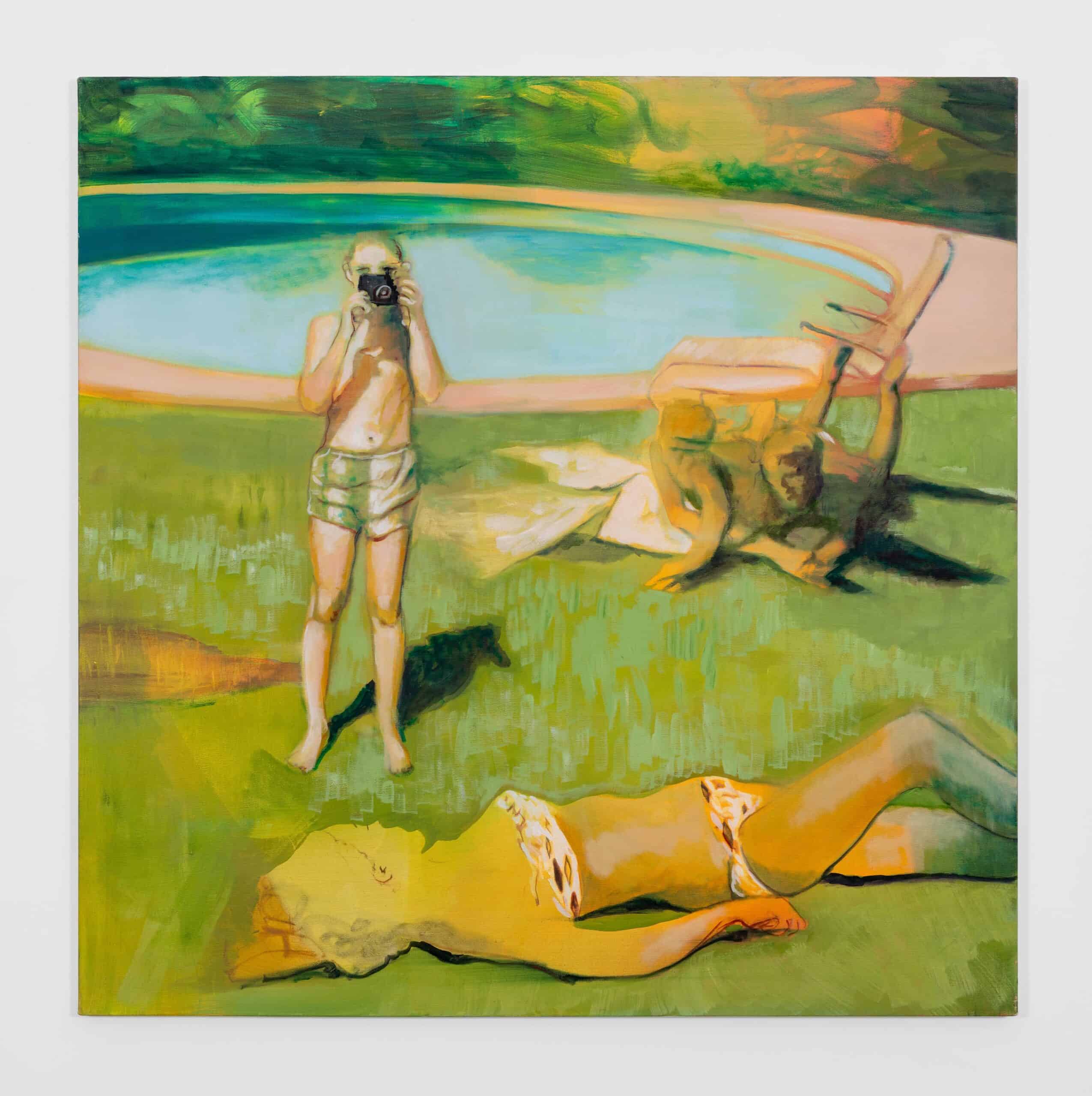
Kate Gottgens, Her Glittering Embrace, 2023
There’s something magical, yet solemn, about finding another person’s pictures at a charity shop or flea market. Couples who’ve reached their expiry date, stories from loved one’s that they can no longer tell you… taking on the feeling of another person’s nostalgia and the refusal of their memories can often feel like prying into their vulnerability. The same cannot be said for Kate Gottgens’ paintings, inspired and drawn from her personal archive of over a hundred thousand found photographs taken in and of the suburbs of South Africa. Rather than feeling like an outsider to another memory, Gottgens’ semi-abstracted, sketchy paintings lean upon the viewer’s own nostalgia to complete the gaps of her paintings.
Gottgens’ process of making is much like an intervention; pouring over aged and weathered photographs, she looks for the ‘glitches’, made both mechanically and by human hands over time. Where do the shadows hide something from view? Where do the colors become unreal? Where has something been faded and worn into obscurity? Analysing her collected materials, she recreates these ‘failures’ of the photograph by layering figures, scenes, and objects from a multitude of sources onto canvas and monotype. In doing so, she not only pays homage to the antique nature of her source material, but she also creates a simultaneous sense of reality and unreality.
While the suburban landscape is immediately identifiable for many, Gottgens disrupts one’s sense of familiarity with the idyllic pasture. Seen in her painting The Suburban Erotic, the frozen memories are distorted and overlapped, like flicking through an unsorted photo box, causing a time-plurality within a single painting — a multiverse of possibilities and the collapse of linear time. Having effectively disrupted the transmission of the photograph’s memory across time through this intentional overlap and obscurification, Gottgens calls upon the viewer to guess what the meaning of the scene could be.
With the multitude of possibilities playing out in front of you, with no more correct than the other, one is spurred to lean upon the vortex of one’s own memory as you pull at the numerous unfinished threads, trying to unspool meaning from the web connecting what’s been depicted, what’s been erased, and what your own memory tries to attach. Looking at Ruby Twilight, a private photograph of a topless woman with her face obscured is superimposed onto the exterior setting of the suburban yard – simultaneously removing and providing both security and exposure. Each blurred face and each point of overlap are highly intentional; unlike the nonchalance in which these ‘happysnap’ reference images are taken, Gottgens is particular about what is extracted from the photographs and makes it onto her canvas. In doing so, the plurality of meanings are created:
Is her seated nudity intended to recall Manet’s Le Déjeuner sur l’herbe? Her face has been obscured, what is her connection to those around her? Did the other figures come from her source photograph, or were they brought from elsewhere? What brings her to her state of undress, contrary to those around her? Is the level of definition of her body in such stark contrast to the shadowy figures around her a nod to her sexuality? And what of her confident pose and forward ‘gaze’? Has her moment of privacy, her comfort and vulnerability with the photographer now become distorted as we become able to see her? Or is this a defiant retaliation? Is the displacement of her body and the scenario around her — making her exposure much like seeing a nude body for the first time — supposed to speak to a discovery or a discomfort with sexuality? Is her poolside location a reference to urbanity and the feelings of safety offered by enclosed suburbia?

Kate Gottgens. Ruby Twilight (2023)
This plurality is the ‘gap’ through which Gottgens inserts her own experience of South African suburbia, imparting as much of a piece of herself to each painting as the audience does in its viewing. Working with a personal photographic catalogue, Gottgens reflects on the historical archives of South African photographs, where racism and exclusion are made obvious. South African suburbia itself, the subject of her collected photographs, was only made possible through the racist policies of the Group Areas Act and immense displacement. Born in apartheid South Africa, Gottgens is intentional in creating and using media authentic to the privilege and lifestyle that was afforded to her – a suburban class of pools, gardens, domesticity, but also recklessness, hedonism, disregard, malaise, and ennui. Hoping to expose this underbelly of suburbia, Gottgens overlays these scenes of leisure and comfort with the liminal, disquiet, and unsettling, thereby rupturing the notion of the paradisiacal ideal.
She connects this sensation, this discomfort, to a global audience through anonymisation. While each of her reference photographs depict a real person, in her paintings they bear no identification. They remain uncannily specific — recognisable clothing, personal belongings, hairstyles — but Gottgens removes their name, story, and context by pulling them out of their photographs and blending them on her canvas. As a result, they are cyphers, a general figure each person can connect with, who are suspended, immortal, in a placid, universal suburbia rife with leisure and malaise
(By Teddy Woods)
